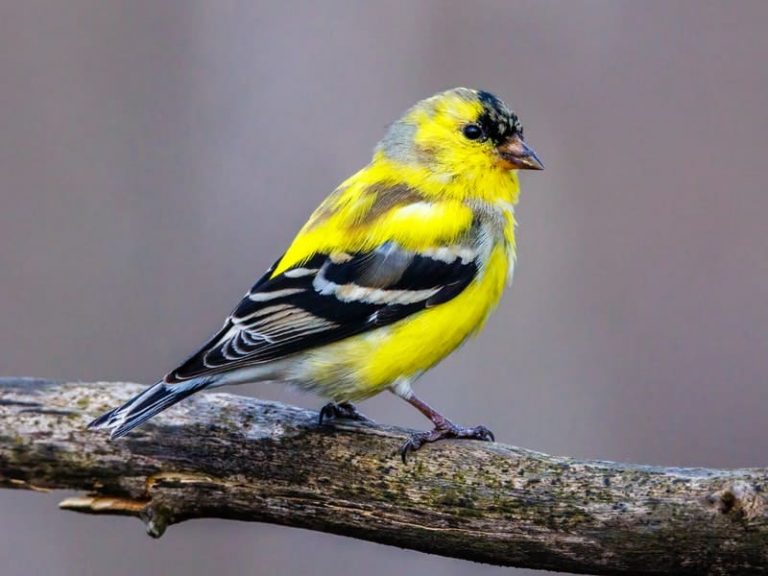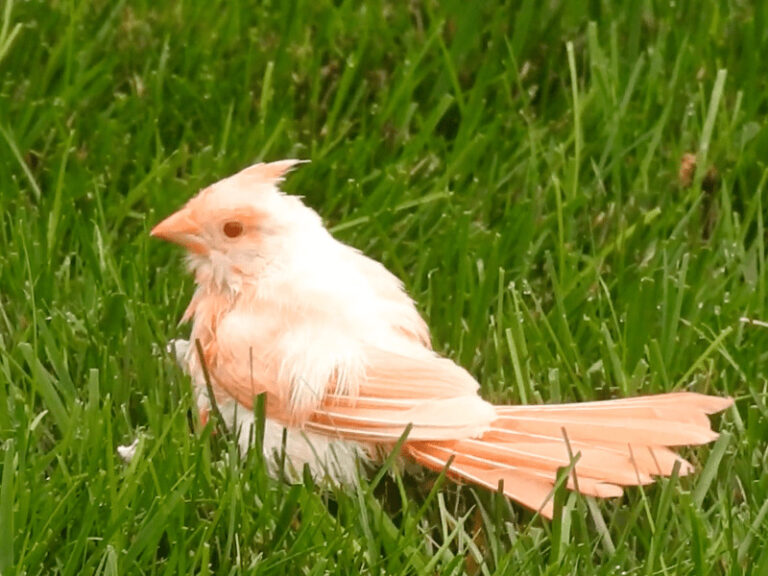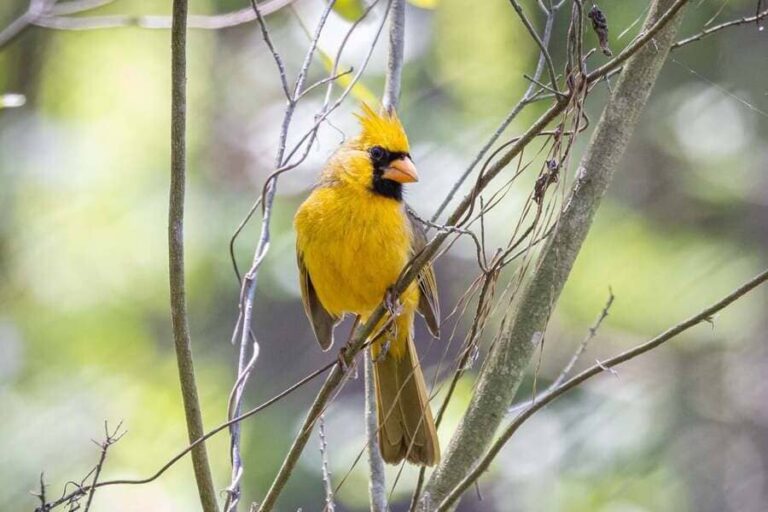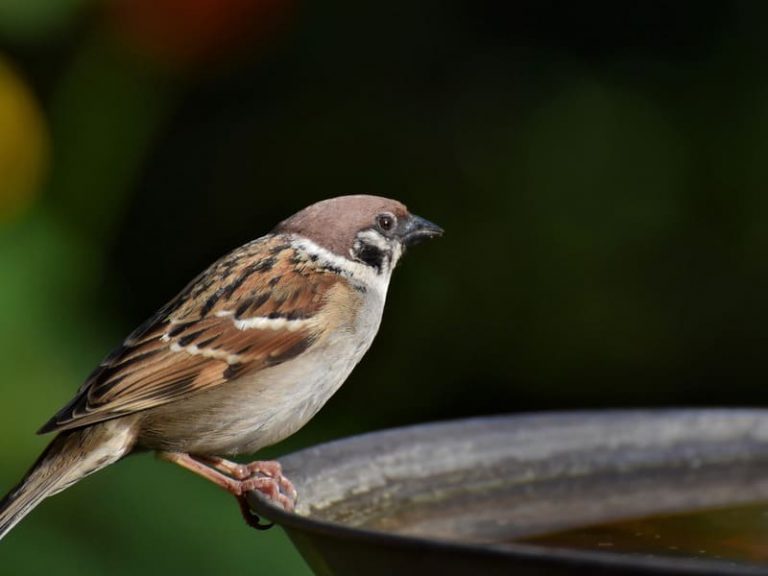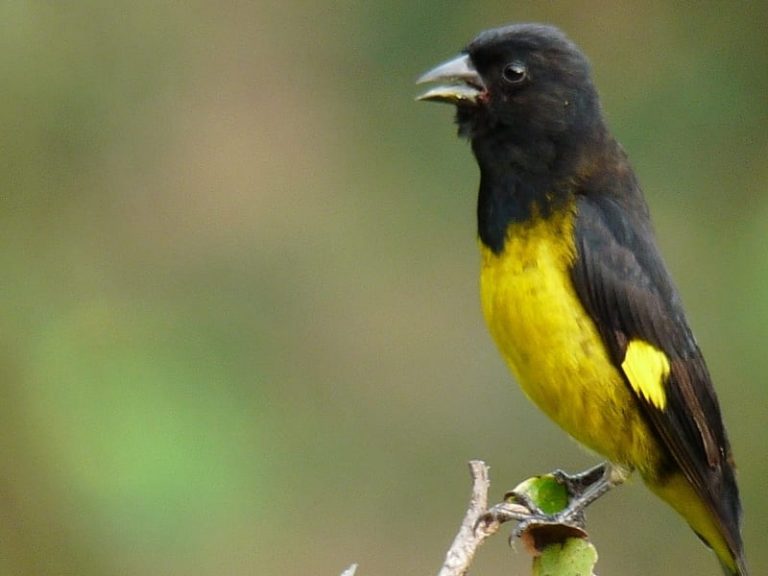8 Species Of Woodpeckers In Virginia
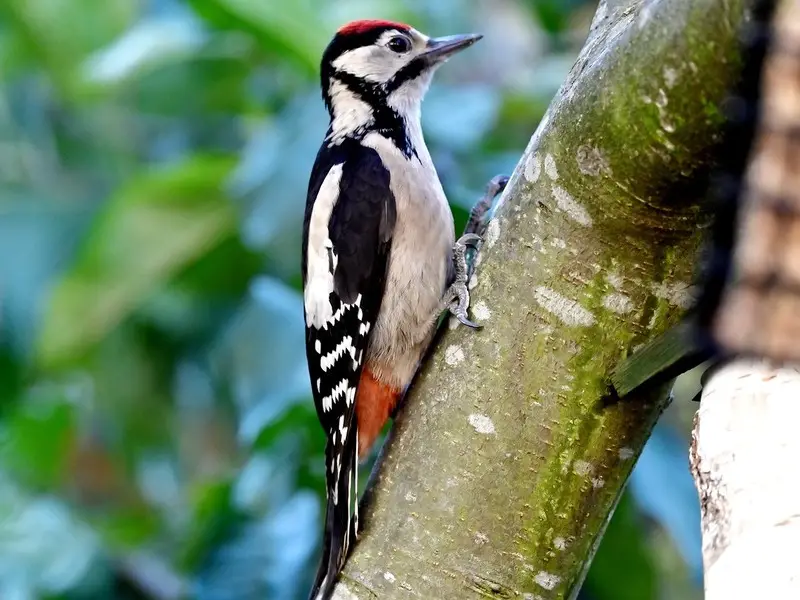
Many bird lovers across the nation enjoy watching various species of woodpeckers foraging for food, and Virginia has its fair share of these incredible birds.
From the pileated woodpecker that can be seen in greater numbers throughout the Shenandoah Valley to smaller varieties such as red-headed and downy woodpeckers that live closer to urban areas, there are plenty of species to study and appreciate.
In this blog post, we will explore a few high-profile types of woodpeckers in Virginia, along with some fun tips on how to attract them into your backyard.
Whether you’re an experienced birder or just getting started, read on for all things related to woodpeckers in Virginia.
How do I identify a woodpecker?
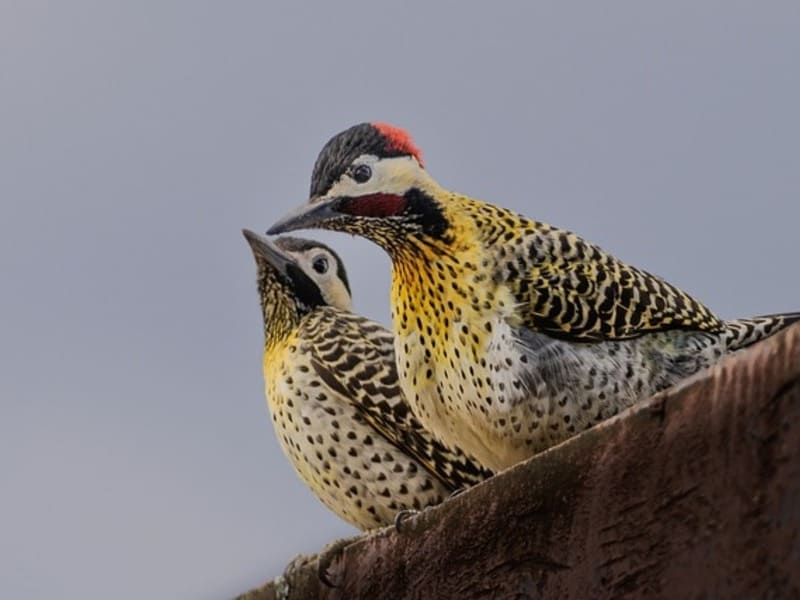
Identifying a woodpecker can be as easy as listening to its distinctive call! Stake out a tree, and you will most likely encounter one of these unique birds. They have a loud, harsh call that sounds almost mechanical in nature.
Woodpeckers are also known for the rhythmic drumming they make against trees when looking for prey or territory markings.
They have short legs, an emphasized pointy bill, and speckled brown feathers, supporting their classic image of being wild birds.
It’s important to note that there are over 200 different species of woodpeckers throughout the world, so colors may vary by type. As soon as you hear them near your property, you will definitely know how to identify a woodpecker.
You will also enjoy reading: What do Woodpeckers Eat?
Lewis’s Woodpecker
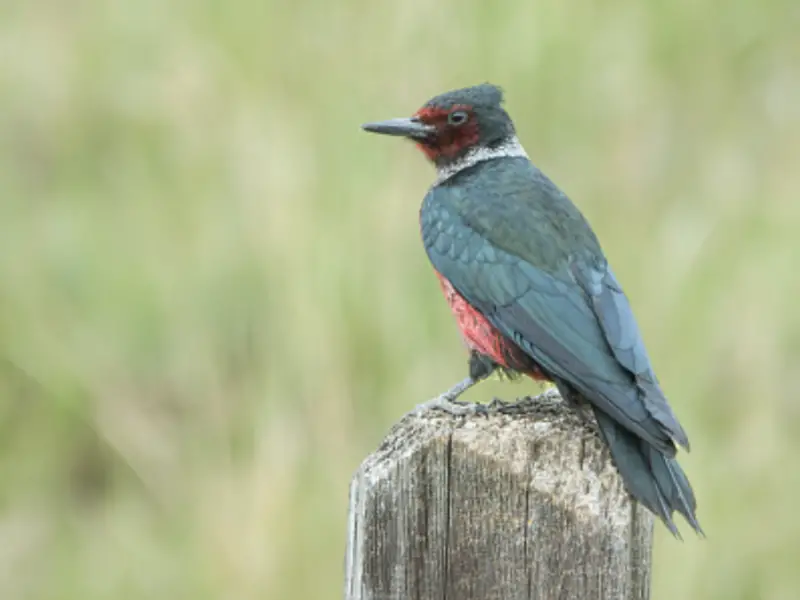
- Length: 26cm to 28cm
- Weight: 120g
- Wingspan: 49cm to 52cm
The Lewis’s Woodpecker is found in Virginia, but it’s not easy to spot one of these unique birds. With its scarlet head, smoky grey wings, and chestnut red back, the Lewis’s Woodpecker makes a colorful addition to any backyard.
Unfortunately, these beautiful birds are becoming increasingly rare due to the loss of habitat from urban development and deforestation.
Its length is 26cm to 28cm, weight is 120g and wingspan is 49cm to 52cm. If you’re persistent and have a bit of luck, you may be able to see this amazing bird in parts of Virginia where it remains common.
Protecting the habitats that these birds need is essential if we hope to continue seeing them for years to come.
Northern Flicker

- Length: 11.0-12.2 in
- Weight: 3.9-5.6 oz
- Wingspan: 16.5-20.1 in
Virginia is an amazing state for birders of all skill levels, as it offers a vast array of beautiful birds to be observed. One of the most renowned inhabitants of the Commonwealth is the Northern Flicker.
This woodpecker species is perhaps best known for its distinctive red crescent chevron markings and white rump patch. Its length is 11.0-12.2 inches, and weight is 3.9-5.6 oz, and its wingspan is 16.5-20.1 inches.
Not only are their appearances unique, but their behaviors are quite fascinating; unlike most other woodpeckers that hammer on trees for food, these flickers prefer to scavenge for insects on the forest floor.
It’s no wonder why they’ve been popular among nature enthusiasts in this part of the country.
Downy Woodpecker

Length: 5.5-6.7 in
Weight: 0.7-1.0 oz
Wingspan: 9.8-11.8 in
The Downy Woodpecker is a common sight in the woodlands of Virginia. These diminutive birds are beloved for their distinct ‘tapping’ sounds and showy markings that feature dramatic bands of black and white. Its length is 5.5-6.7 inches, weight is 0.7-1.0 oz, and wingspan is 9.8-11.8 inches.
With a wide variety of habitats to choose from, these birds make it easy to spot them among the trees as they dive down in search of insects.
Not only do they bring life and movement to an area, but they also help keep local insect populations in check; which contributes to keeping the forest ecosystem balanced. Seeing a Downy Woodpecker is a treat that will fill viewers with delight.
Hairy Woodpecker
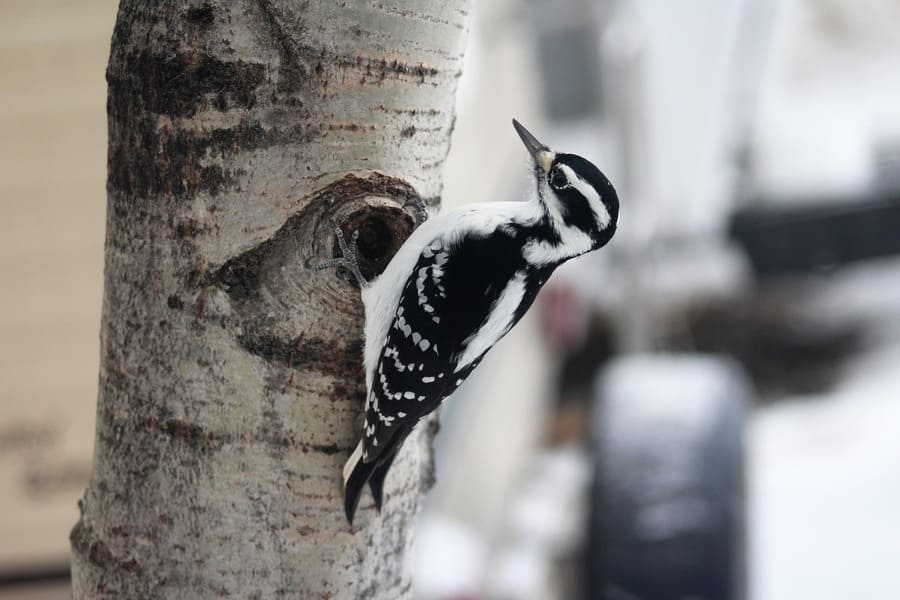
Length: 7.1-10.2 in
Weight: 1.4-3.4 oz
Wingspan: 13.0-16.1 in
The Hairy Woodpecker is an attractive and interesting bird species present in Virginia. That state’s plentiful trees, full of holes from bugs looking for food and birdhouses made by local enthusiasts, make it the ideal habitat to support this delightful creature. Its length is 7.1-10.2 inches, weight is 1.4-3.4 oz, and wingspan is 13.0-16.1 inches.
This stout little bird’s body is similar in size to a Blue Jay’s, but they have unique white stripes on their head instead of blues.
The female has a red patch on the back of her head, which helps them stand out even more. They feed mainly on insects found inside tree trunks and limbs, beak-hammering the insides of trees to find them.
On occasion, they will drop down onto lawns searching for ants, beetle larvae, or other tasty treats. The sound of their rhythmic tapping can often be heard as they search out insects, and a Hairy Woodpecker sighting can be a truly rewarding experience.
Red-Headed Woodpecker
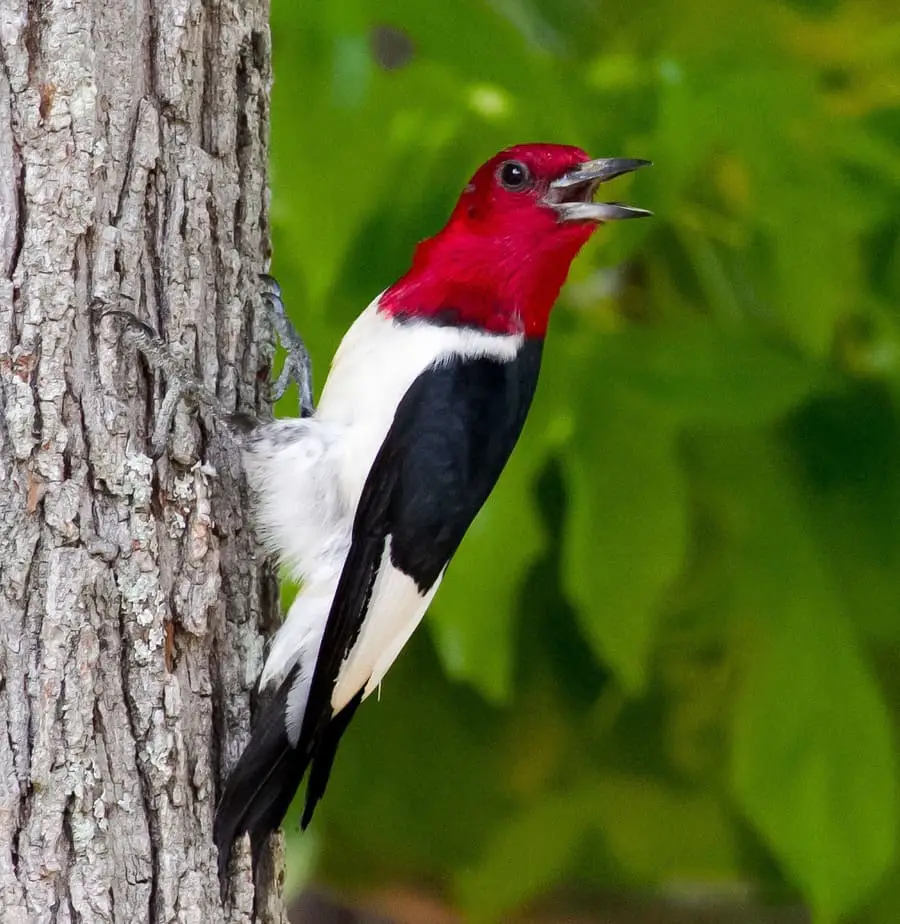
- Length: 7.5-9.1 in
- Weight: 2.0-3.2 oz
- Wingspan: 16.5 in
The Red-headed Woodpecker is a species found throughout Virginia. These birds are notable for their bright red heads, white bellies, and black bodies with white spots. This bird species also provides important services in Virginia.
Their diet consists of fruit, nuts, insects, and more, and they act as a natural pest control solution. Red-headed woodpeckers also help to disperse seeds from the fruit they eat, aiding in forest regeneration.
Furthermore, these birds can provide ecosystem resilience by burrowing holes in trees which can later be used by other species as shelter or breeding grounds.
The populations of the Red-Headed Woodpecker are declining across its range due to habitat loss, but thankfully there is still hope in Virginia.
Its length is 7.5-9.1 inches, weight is 2.0-3.2 oz, and wingspan is 16.5 inches. Conservationists are working to protect these beloved birds as part of their long-term goal: preserving our natural world for generations to come.
Yellow-Bellied Sapsucker
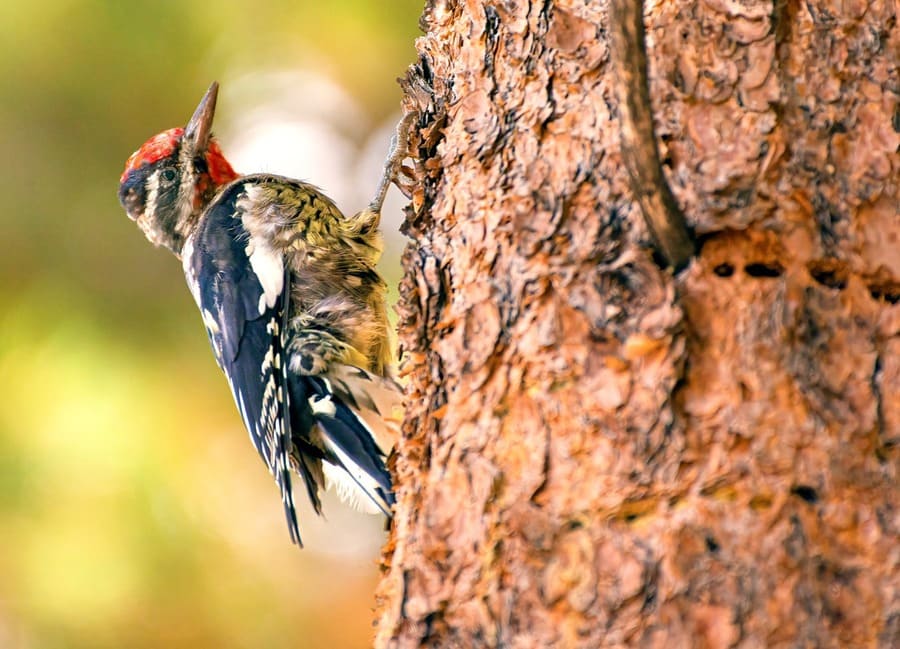
Length: 7.1-8.7 in
Weight: 1.5-1.9 oz
Wingspan: 13.4-15.8 in
The Yellow-Bellied Sapsucker is a delightful sight to come across in Virginia’s wooded areas. These birds love to feed on the sap from maple and pine trees, which helps create the wonderfully diverse flora of this state.
While the bright yellow bellies of these birds certainly make them stand out in a crowd, their distinct pink and black patterns can also be quite eye-catching. In addition to their fascinating looks, their friendly calls are sure to attract people of all ages from near and far.
Its length is 7.1-8.7 inches, weight is 1.5-1.9 oz, and wingspan is 13.4-15.8 inches. Whether going out on an adventure or simply taking time to relax, seeing one of these impressive birds is a great way to enjoy Virginia’s natural wonderland.
Pileated Woodpecker

Length: 15.8-19.3 in
Weight: 8.8-12.3 oz
Wingspan: 26.0-29.5 in
The Pileated Woodpecker is one of the most distinctive birds in Virginia. This large, crow-sized woodpecker can be found in hardwood forests across the state.
It is most easily recognized by its long, pointed bill and its flaming red crest. Its length is 15.8-19.3 inches, weight is 8.8-12.3 oz, and wingspan is 26.0-29.5 inches.
Its drumming sounds can often be heard echoing through the woods as it searches for food, typically insects such as ants or beetles. The Pileated Woodpecker is a majestic sight to encounter while exploring the beautiful woodlands of Virginia.
Red-Cockaded Woodpecker
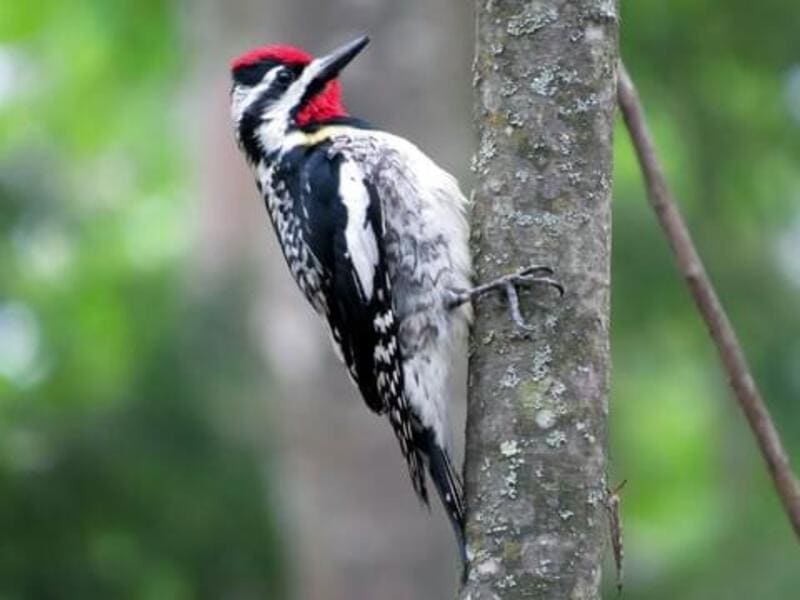
- Length: 7.9-9.1 in
- Weight: 1.5-1.8 oz
- Wingspan: 14.2 in
The red-cockaded woodpecker is a unique species native to Virginia that, despite its resilient nature and long population history in the state, has seen a significant decline in numbers over the past several decades.
Conservation efforts have attempted to protect this species, with limited success overall.
Within Virginia, the woodpeckers are primarily found within the George Washington and Thomas Jefferson National Forests, making these habitats all the more important for their survival as a species. Its length is 7.9-9.1 inches, weight is 1.5-1.8 oz, and wingspan is 14.2 inches.
Fortunately, government agencies continue to recognize the importance of preserving these birds, giving them a glimmer of hope in their fight against woodland destruction and urbanization.
FAQs
It’s always fascinating to learn about the behaviors of animals, and those of the particular species of woodpecker in Virginia are no exception.
One such peculiar habit that these birds exhibit is known as drumming: banging their beaks against trees in order to mark their territory and communicate with each other.
In addition, woodpeckers sometimes search for food through various charades. For example, they can use their beaks to probe at crevices or shuffle leaves to look for insects while balancing on one foot and fanning out its tail feathers.
While these can seem strange at first, it’s amazing how much ingenuity is demonstrated by these smart birds. Now let’s discuss some frequently asked questions about species of woodpecker in Virginia.
What attracts woodpeckers to your house?
Woodpeckers are fascinating birds that can bring beauty and energy to any yard. These birds can be drawn to areas if certain conditions are met, such as the presence of food, the availability of nest-ready sites, and standing dead trees for foraging.
If a homeowner has a fruit tree in their backyard, bird feeders, or piles of logs and brush near their house, they will likely attract woodpeckers in no time.
Woodpeckers enjoy grubs and insects plucked from tree bark as well as suet from bird feeders. By creating an inviting environment with natural food sources and places to roost, a homeowner can entice these energetic birds to make their home nearby.
What months are woodpeckers most active?
Woodpeckers are most active during the warmer months, generally from spring until late summer.
During these months, woodpeckers begin to stake out their territory and search for food. Experiencing the sights and sounds of these charismatic birds is sure to bring a bit of joy to anyone spending time outdoors near their natural habitats.
They may be spotted clinging onto tree trunks at this time of year, busily looking for insects or larvae beneath the bark. Most birdwatchers are familiar with the classic sound of a woodpecker dive-bombing a tree, pecking away madly to find its next meal.
Woodpeckers largely enjoy settling near residential areas since they have easy access to trees and other structures that provide great food sources as well as nesting sites.
All in all, if you’re hoping to spot these fun birds around your home, look no further than those sunny spring and summer days.
During these times, woodpeckers gather food, search for potential homes and mates, and stake out their territories.
While seasons might be more pronounced depending on where you live, generally speaking, they’re most active while days are longer and temperatures remain warmer.
Is it good to have woodpeckers in your yard?
Having woodpeckers in your yard can be quite a treat for bird enthusiasts. The distinctive and loud sound of their tapping on trees can bring cheer to even a small corner of nature.
Beyond being fun to observe, woodpeckers also offer multiple benefits that homeowners should not ignore.
They remove insect infestations from trees, allowing the tree’s health to improve, and they create holes in dead trees that other birds use as nesting sites. Allowing woodpeckers in your yard certainly has its advantages;
However, it would be wise to take caution before deciding yes or no; their frequent hammering can cause damage to house siding or roofs. Ultimately, it can be a great experience if you are willing to put up with the occasional noisy distraction!
These small birds are known for their bright and vibrant feathers, which are sure to add some visual beauty to your outdoor space.
Not only that, hearing their call can be a soothing reminder of the peaceful outdoor setting you have created. In addition, these birds showcase a remarkable ability to survive in many different locations.
They make habitats from trees and forests, so no matter what kind of garden or landscape you have, woodpeckers can easily find a home in your yard.
Plus, woodpeckers help keep pesky insects away, which helps maintain the balance in your garden or landscape ecosystem.
Final Words
Out of the 8 species, the most common in Virginia is the Downy Woodpecker. While all woodpeckers are beneficial to ecosystems, the downy woodpecker specifically plays an important role in controlling insect populations.
If you’re lucky enough to see one of these beautiful creatures in person, take a moment to appreciate their value to our environment and remember that we must do our part to protect them and their homes.
Interesting articles:


